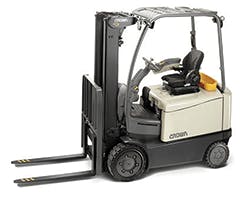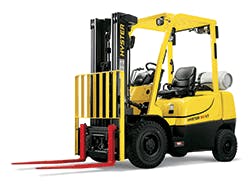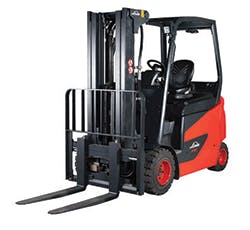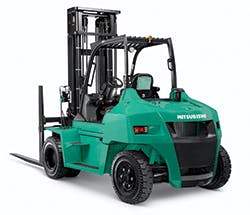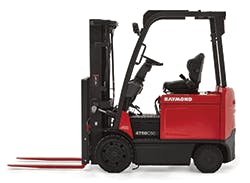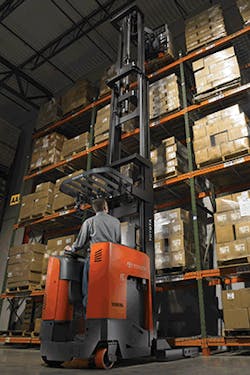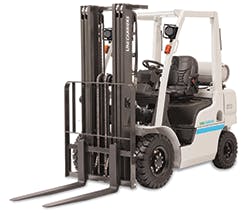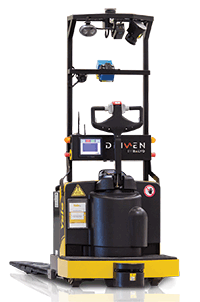Lift Trucks 2016: What's Up with the Latest in Forklift Technology
When it comes to lift trucks, the number one criterion is safety—for the operator, as well as for pedestrians. It should come, then, as no surprise that the lift truck manufacturers have expended significant investments in upgrading their models to improve line-of-sight visibility, ergonomic comfort, vehicle stability, maneuverability and other essential features that are just as important—and maybe even more important—as how many pounds the forks can lift.
Thanks to telematics and the Internet of Things-based technologies, the fork lift of 2016 is as much an intelligent vehicle as today's smartphones are basically fully-functional computers that you can slip into your pocket. Whether developed in-house by the OEMs, such as Komatsu's KOMTRAX, or provided by solution developers such as I.D. Systems, KORE Wireless and TotalTrax, these technologies take the guesswork out of maintenance while adding extra levels of accountability and safety to every driver.
The following guide, while by no means a comprehensive listing of every new model and feature being introduced this year, offers a look at some of the major trends dominating the lift truck marketplace.
Crown
Hyster
KION
Mitsubishi
Raymond
Toyota Industrial Equipment has introduced a new Reach Truck that's available in 2,500-4,500 lb. capacities. It comes in single and double reach models, with the choice between 24-volt or 36-volt power as well as battery compartments as short as 14.5 inches to as long as 21.5 inches. Key safety features include a high-visibility overhead guard, electric horn, emergency power disconnect switch, and an anti-static ground strap.
UniCarriers
Yale Materials Handling Corp. has debuted robotic lift truck technology with the introduction of Driven by Balyo technology into its Yale MPE080VG end rider, which can now operate as a self-guided truck. The infrastructure-free navigation technology requires no tape, wire or magnets for guidance. Instead, it relies on existing structural features such as walls, racking and columns to self-locate and navigate. The self-guided truck independently picks up, transports and drops off pallets anywhere on the floor.
About the Author

Dave Blanchard
Senior Director of Content
During his career Dave Blanchard has led the editorial management of many of Endeavor Business Media's best-known brands, including IndustryWeek, EHS Today, Material Handling & Logistics, Logistics Today, Supply Chain Technology News, and Business Finance. He also serves as senior content director of the annual Safety Leadership Conference. With over 30 years of B2B media experience, Dave literally wrote the book on supply chain management, Supply Chain Management Best Practices (John Wiley & Sons, 2021), which has been translated into several languages and is currently in its third edition. He is a frequent speaker and moderator at major trade shows and conferences, and has won numerous awards for writing and editing. He is a voting member of the jury of the Logistics Hall of Fame, and is a graduate of Northern Illinois University.

